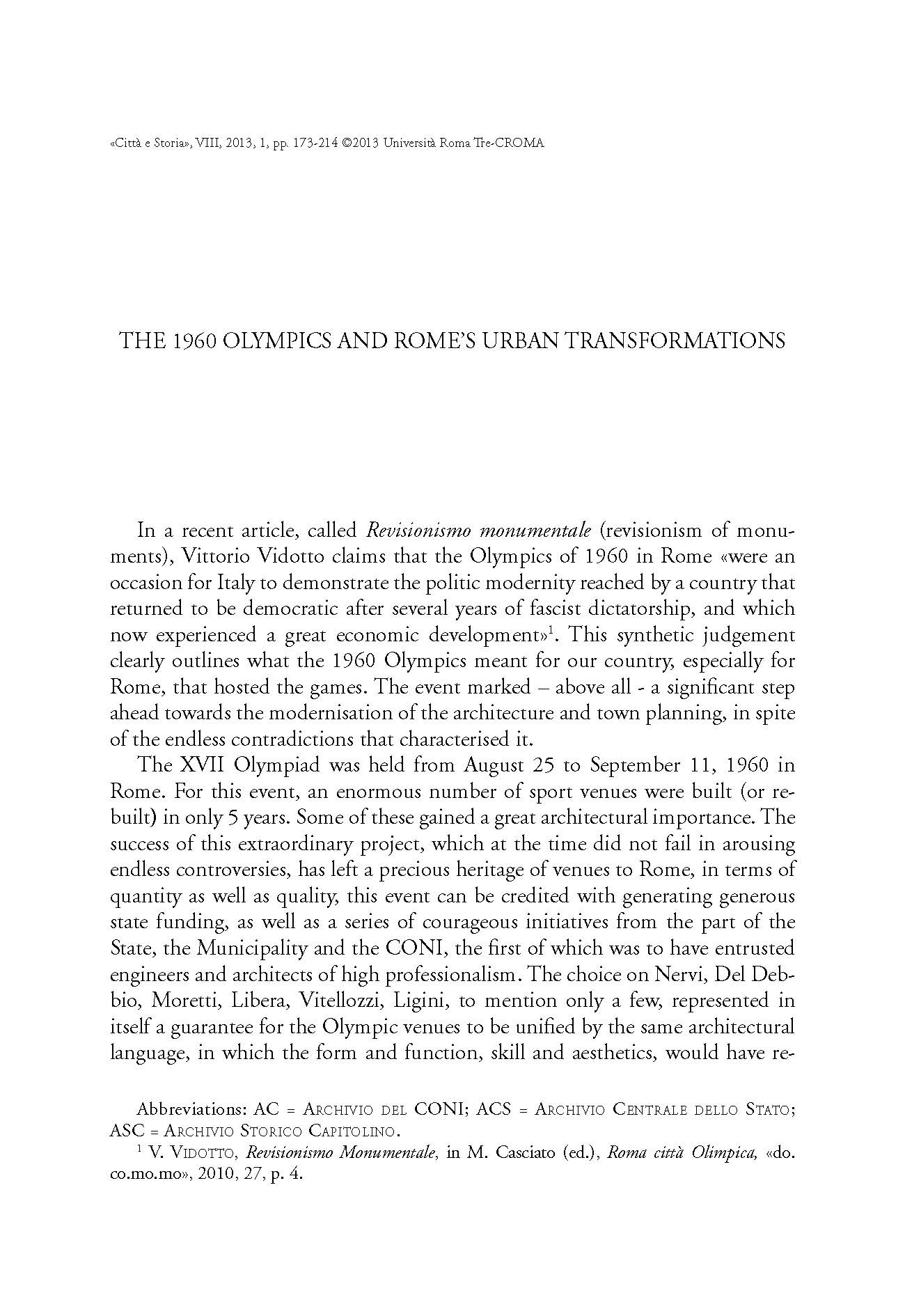The 1960 Olympics and Rome’s Urban Trasformations
6,00 €
The XVII Olympiad was held from August 25 to September 11, 1960 in Rome. For this event an enormous number of sport venues were built (or rebuilt) in only 5 years. The success of this extraordinary project must be attributed to generous state funding, but also to the decision of entrusting highly professional architects to carry out the tasks. The valuable pieces of work, which were realized, changed completely the aspect of some of Rome’s most important zones, such as the northern one, while some of the road infrastructures even influenced the city’s future development. Most of the planning solutions that the Municipality adapted had already been suggested in the fascist era, when the possibility of hosting the Olympic Games in the Capital was being pondered, first in 1940 and then in 1944. A link between the sport politics of the fascist era and that one of the post-war period, was the C.O.N.I. (Italian National Olympic Committee), which had a determinant role not only of the planning of the Olympic venues, but also of the choosing of the areas on which they were to be realized, this way influencing– even if indirectly – the urban development politics just in the most crucial years of Rome’s contemporary history, when the current Urban Planning of 1931 had been already out-dated and the new one was still in drafting stage. After the second post-war period there are no extraordinary events in Rome’s history, which could be compared to the 1960 Olympiad, capable to affect, on an “urban scale”, the process of the city’s modernisation. The only event, for its range of ventures and quality of the realized works, which can flank to the 1960 Olympiad, was the 2000 Jubilee.
The XVII Olympiad was held from August 25 to September 11, 1960 in Rome. For this event an enormous number of sport venues were built (or rebuilt) in only 5 years. The success of this extraordinary project must be attributed to generous state funding, but also to the decision of entrusting highly professional architects to carry out the tasks. The valuable pieces of work, which were realized, changed completely the aspect of some of Rome’s most important zones, such as the northern one, while some of the road infrastructures even influenced the city’s future development. Most of the planning solutions that the Municipality adapted had already been suggested in the fascist era, when the possibility of hosting the Olympic Games in the Capital was being pondered, first in 1940 and then in 1944. A link between the sport politics of the fascist era and that one of the post-war period, was the C.O.N.I. (Italian National Olympic Committee), which had a determinant role not only of the planning of the Olympic venues, but also of the choosing of the areas on which they were to be realized, this way influencing– even if indirectly – the urban development politics just in the most crucial years of Rome’s contemporary history, when the current Urban Planning of 1931 had been already out-dated and the new one was still in drafting stage. After the second post-war period there are no extraordinary events in Rome’s history, which could be compared to the 1960 Olympiad, capable to affect, on an “urban scale”, the process of the city’s modernisation. The only event, for its range of ventures and quality of the realized works, which can flank to the 1960 Olympiad, was the 2000 Jubilee.

